Pestle Puffball
A relatively big size, pestle shaped puffball on a tall, sterile, stem-like structure.
| Mushroom Type | |
| Common Names | Pestle Puffball (EN), Coden Fwg Pen Pastwn (CY), Czasznica Workowata (PL), Változékony Pöfeteg (HU) |
| Scientific Name | Lycoperdon excipuliforme |
| Synonyms | Calvatia excipuliformis, Handkea excipuliformis |
| Season Start | Aug |
| Season End | Nov |
| Average Mushroom height (CM) | 6-20 |
| Average Cap width (CM) |
Fruiting Body
6–20 cm tall, 5–10 cm wide, pear or pestle shaped with a distinct head and a sterile, stem-like structure which holds up the head. The outer layer or skin (ectoperidium) covered with spiny granules. Whitish when young, creamy to grey brown with age. The inner layer or inner wall (endoperidium) is ochraceous, papery and thin. When the spores have matured, the endoperidium opens up releasing its spores and then disappearing with age. The stem-like sterile structure persistently remains after the spores have been released.
Stem
Does not have a true stem but a sterile stem like structure which can persist throughout the year after the fertile head has disappeared.
Flesh
It is called gleba in the head. The gleba is white when young, then green to olive-brown as the spores develop.
Habitat
On soil, preferably in woodlands, both under deciduous trees and conifers, occasionally on grasslands and in hedgerows. Grows solitary, in small groups.
Possible Confusion
When young, it might be confused with smaller, white puffballs from genus Lycoperdon.
Common Puffball (Lycoperdon perlatum), pictured, is generally much smaller, its colour is paler, whitish to cream, also its head is covered with easily falling spines.
Mosaic Puffball (Lycoperdon utriforme) is a medium to large puffball, but it prefers unimproved grasslands, and its head is covered with pyramid-like warts.
Taste / Smell
Taste and smell not distinctive. It is only edible as long as the gleba is white.
Frequency
Relatively common and widespread in the UK.
Spores
Spore print is olive-brown. Spores are spherical, warty, brownish.


 (4 votes, average: 4.50 out of 5)
(4 votes, average: 4.50 out of 5)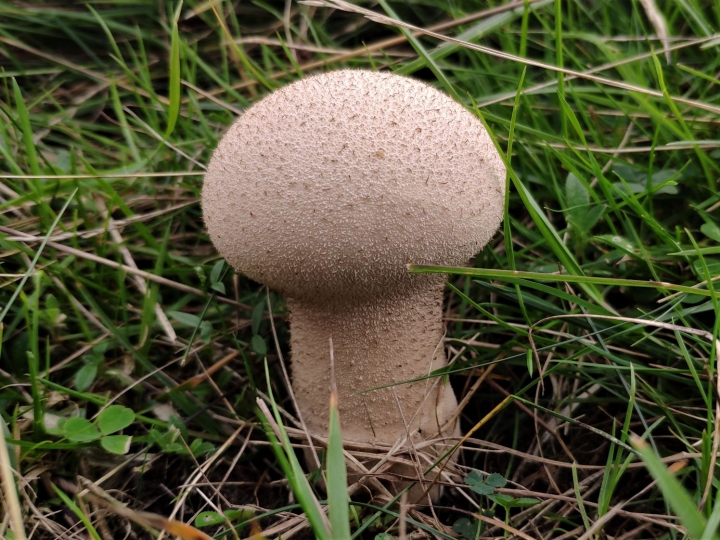
















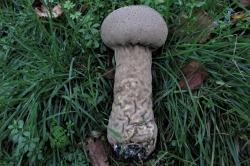
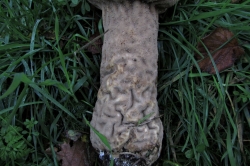
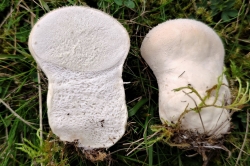
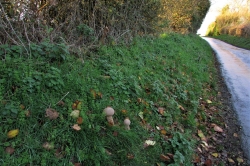
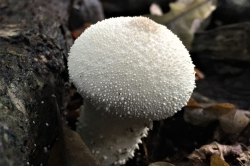
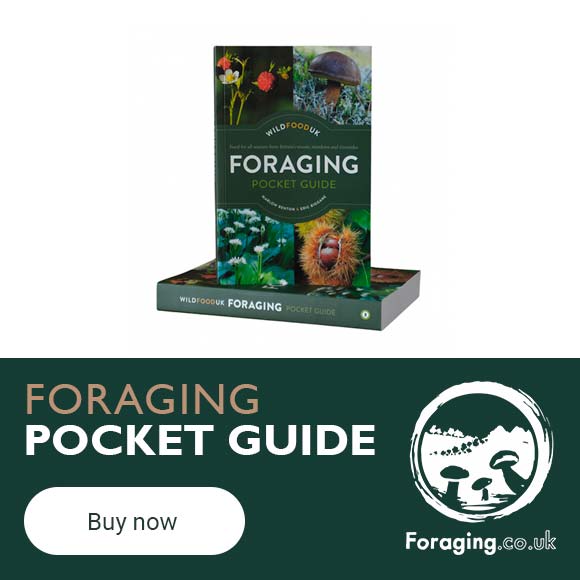
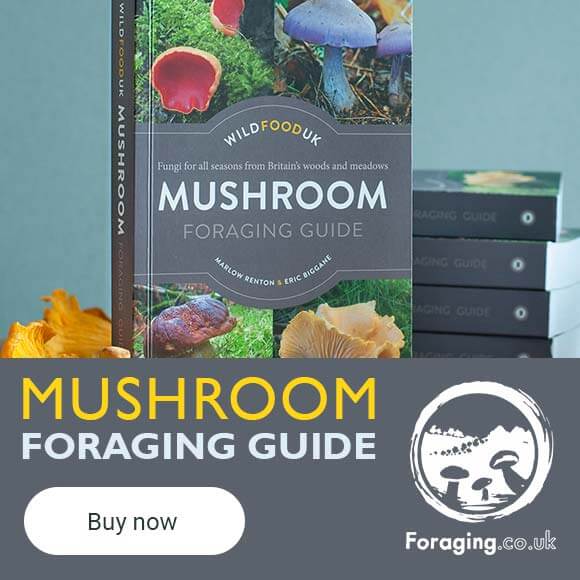
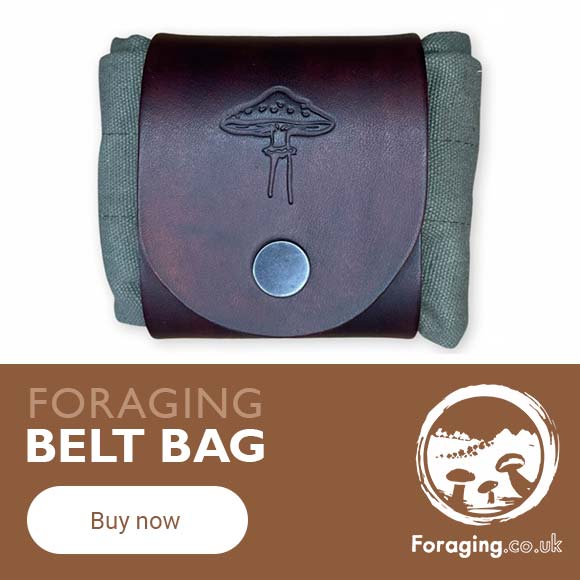
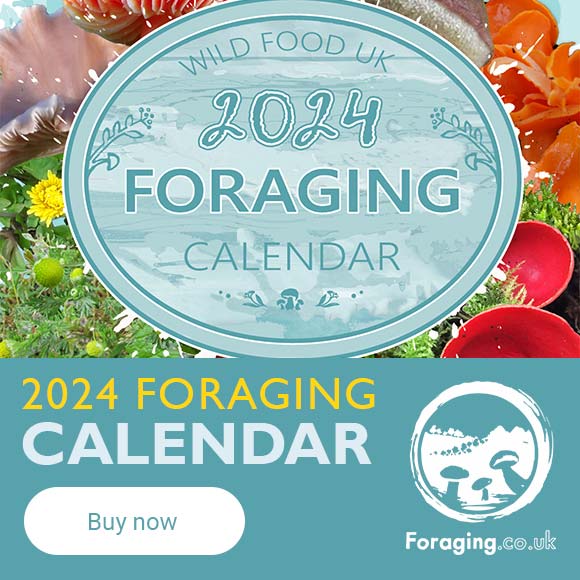
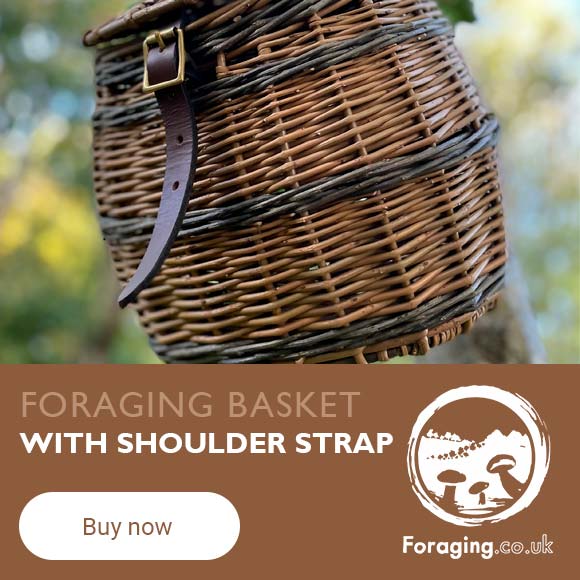
COMMENTS